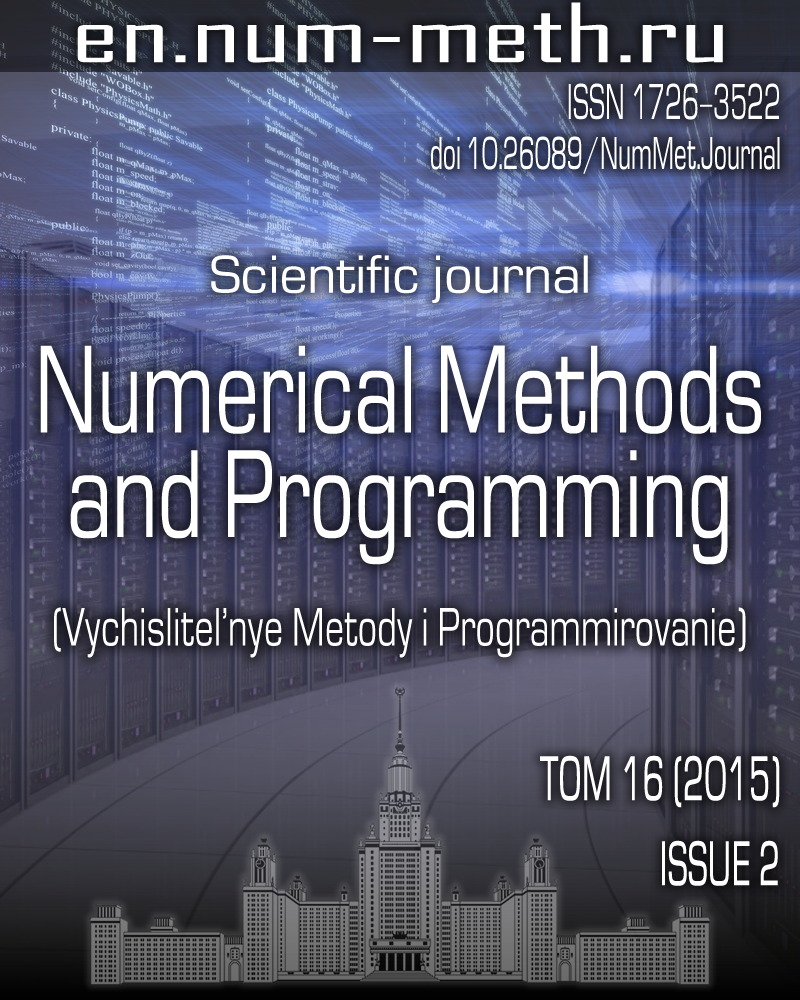DOI: https://doi.org/10.26089/NumMet.v16r229
An approach for constructing one-point iterative methods for solving nonlinear equations of one variable
Keywords:
iterative processes
Newton’s method
logarithmic derivative
simple pole
contracted mapping
third order method
singular point
transcendental equations
Abstract
An approach for constructing one-point iterative methods for solving nonlinear equations of one variable is proposed. This approach is based on the concept of a pole as a singular point and on using Cauchy’s convergence criterion. It is shown that such an approach leads to new iterative processes of higher order with larger convergence domains compared to the known iterative methods. Convergence theorems are proved and convergence rate estimates are obtained. For polynomials having only real roots, the iterative process converges for any initial approximation to the sought root. Generally, in the case of real roots of transcendental equations, the convergence takes place when an initial approximation is chosen near the sought root.
Published
2015-06-08
Issue
Section
Section 1. Numerical methods and applications
References
- I. S. Berezin and N. P. Zhidkov, Computing Methods (Nauka, Moscow, 1966; Oxford, Pergamon, 1965).
- A. P. Domoryad, “Numerical and Graphical Methods for Solving Equations,” in Encyclopaedia of Elementary Mathematics (Gostekhizdat, Moscow, 1951), pp. 312-417.
- J. Gerlach, “Accelerated Convergence in Newton’s Method,” SIAM Rev. 36 (2), 272-276 (1994).
- W. F. Ford and J. A. Pennline, “Accelerated Convergence in Newton’s Method,” SIAM Rev. 38 (4), 658-659 (1996).
- J. M. Ortega and W. C. Rheinboldt, Iterative Solution of Nonlinear Equations in Several Variables (Academic, New York, 1970; Mir, Moscow, 1975).
- J. Stoer and R. Bulirsch, Introduction to Numerical Analysis (Springer, New York, 1993).
- J. F. Traub, Iterative Methods for the Solution of Equations (Chelsea, New York, 1982; Mir, Moscow, 1985).
- T. Zhanlav and O. Chuluunbaatar, “Convergence of a Continuous Analog of Newton’s Method for Solving Nonlinear Equations,” Vychisl. Metody Programm. 10, 402-407 (2009).
- F. Zafar and N. A. Mir, “A Generalized Family of Quadrature Based Iterative Methods,” General Math. 18 (4), 43-51 (2010).
- M. Baghmisheh, Y. Mahmoudi, and M. Jahangirirad, “A New Modification of Newton’s Method by Gauss Integration Formula,” Life Sci. J. 10, 288-291 (2013).
- H. H. Omran, “Modified Third Order Iterative Method for Solving Nonlinear Equations,” J. AI-Nahrain Univ. 16 (3), 239-245 (2013).
- A. A. Amosov, Yu. A. Dubinskii, and N. V. Kopchenova, Computational Methods for Engineers (Vysshaya Shkola, Moscow, 1994) [in Russian].
- A. I. Markushevich, The Theory of Analytic Functions (Nauka, Moscow, 1967; Chelsea, New York, 1977).
- V. V. Prasolov, Polynomials (Moscow Tsentr Mat. Obrazov., Moscow, 2003; Springer, Berlin, 2004).

